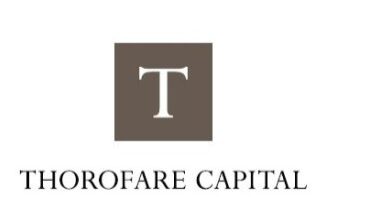“Tech is new for the sake of new. Real Estate is old for the sake of old,” observes Marc Zuluaga, co-founder and Chief Revenue Officer of Cadence OneFive. This tension between in...
Land Constraints Driving Miami's Vertical Growth: Lee & Associates' Michael Hinton on Urban Development Trends




“Because we’ve run out of land east and west of us—East of us is the Atlantic Ocean, West of us is the Everglades—for density purposes, we really need to go vertical,” explains Michael Hinton, Principal at Lee & Associates. This geographical reality is steering development in Miami’s real estate landscape, with developers increasingly looking upward to maximize value in one of America’s most dynamic urban markets.
Tower 36: Anatomy of a Complex Assemblage Deal
The recently completed Tower 36 project exemplifies this vertical development trend. Hinton successfully orchestrated a complex three-parcel assemblage at the northeast corner of 36th Street and Biscayne Boulevard. The deal combined a former gas station at the hard corner, a small 9,300-square-foot middle parcel, and an aging apartment building from the 1950s.
“What started the project was 409 Northeast 36th Street, which was a very old apartment building,” Hinton recounts. “That was my first listing. The two brothers who owned the property were looking to sell. They recognized the significant development activity in the area.”
From that initial listing, Hinton strategically approached the adjacent property owners, convincing the middle parcel owner that they needed “to sell with one of the two people on either side.” The gas station parcel eventually came into play through the buyer’s existing relationship. The complex orchestration resulted in a total acquisition value of approximately $53 million for all three parcels.
Creative Mixed-Use: Beyond Traditional Models
Miami’s land constraints are fostering increasingly innovative approaches to mixed-use development.
“Because land is so scarce—when I started in this industry, nobody would have anticipated industrial land reaching three or four million dollars an acre,” Hinton notes. “Industrial land is incredibly scarce, and we’re seeing residential and retail developments extend into what were traditionally industrial areas.”
This evolution includes the vertical integration of retail spaces within mixed-use developments. “We’re seeing even more creative versions of mixed-use,” Hinton observes. Developers are “being more innovative with retail—not just on the first floor, but extending to the second and third floors, adjoining grocery stores, and incorporating different types of apartments and residential units upstairs.”
Affordable Housing at Height: The Florida Live Local Act
Hinton’s latest listing highlights another emerging trend in Miami’s vertical development landscape—affordable housing in high-rise formats. Located just two blocks from Tower 36 at 34th Street and Biscayne Boulevard, this new development opportunity is being positioned under the Florida Live Local Act.
“That is a high-rise development under the Florida Live Local Act with the potential of developing 499 units with a mix of affordable—or what’s sometimes called attainable—housing,” Hinton explains. “That will be a 47-story tower, and it’s currently in the process of getting approved through the city.”
Priced at $32 million, the 0.84-acre site equates to approximately $60,000 per door for the land development rights. This project demonstrates how policy initiatives like the Florida Live Local Act are helping to address housing affordability challenges while still enabling the vertical densification Miami needs.
Neighborhood Watch: Where Opportunities Remain
While iconic areas like Brickell have nearly reached build-out, with Hinton noting “there’s only one or two parcels still available for development,” emerging neighborhoods are capturing developer attention.
“You really have to go to the north side of downtown, our entertainment district, which is where the Opera House and the Symphony Hall are,” Hinton advises. “Just on the north side of that, we have Edgewater, Wynwood, and those are really prime because they’re zoned very well for development.”
These areas offer compelling advantages beyond favorable zoning. “Some of those parcels have amazing water views of Biscayne Bay,” Hinton adds. “They are really on the north side of our urban core. I’m big on this area. It’s a natural extension of the growth of the downtown market.”
The Collaborative Challenge
Assembling parcels for major vertical developments requires extraordinary coordination among multiple stakeholders. Reflecting on the Tower 36 project, Hinton emphasizes the collaborative nature of such complex deals.
“It was a real challenge, working with three different sellers, one buyer, and multiple attorneys involved,” Hinton says. “It was very much a team effort and a real pleasure to work with One Thousand Group on such a complex deal—getting everybody to the table, reaching agreement, and working together effectively.”
Urban Core Walkability: A Miami Advantage
The urban core’s walkability represents a fundamental driver of Miami’s vertical development trend. As traffic challenges mount, proximity to work, entertainment, and daily necessities becomes increasingly valuable.
“The beauty of living in Miami-Dade is the walkability and being able to live in an urban core where you can live, work, and play,” Hinton observes. “This concept is particularly relevant in Miami, especially given our traffic challenges.”
Looking Ahead
As Miami continues to evolve, its geographical constraints will keep driving creative solutions in the real estate market. The combination of land scarcity, policy initiatives supporting affordable housing, and the enduring appeal of urban living suggests that Miami’s skyline will continue its upward trajectory.
For industry professionals like Hinton, success lies in identifying opportunities, assembling complex deals, and helping to shape a more vertical—and accessible—Miami. The future of the city’s development demands both creativity and collaboration as the market responds to its unique geographic limitations.
Similar Articles
Explore similar articles from Our Team of Experts.


For Mike Speciale, what started as a job selling building materials—lumber, doors, and windows—has evolved into a 26-year journey as one of Austin’s notable developers. As the Owne...


In a commercial real estate market characterized by shifting dynamics and selective opportunities, David Perlman, Managing Director and head of Thorofare Capital‘s New York office, bri...


“Because we’ve run out of land east and west of us—East of us is the Atlantic Ocean, West of us is the Everglades—for density purposes, we really need to go vertical,” ...


“What sets us apart is our willingness to embrace asset and geographic diversification… indevelopment, it’s particularly challenging to operate across multiple states, identify propert...




